Search Images
Browse Content (p. 1240)
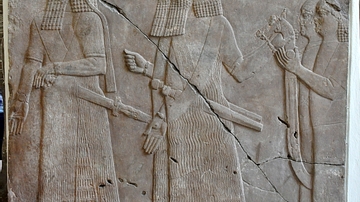
Image
Assyrian Courtiers Carrying the King's Throne
This gypsum wall panel depicts a procession of Assyrian courtiers and eunuchs carrying the King's throne; only the anterior part of the decorated throne's pole survives. This scene represents a remarkable development in the Assyrian art as...
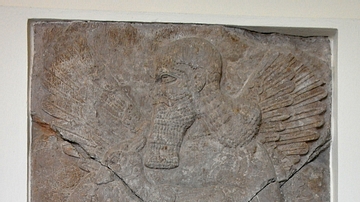
Image
Bare-headed Apkallu with Four Wings
This fragmented alabaster bas-relief depicts an Assyrian Apkallu, a protective spirit or genie. The striking features are that he is bare-headed (he does not wear a horned helmet or diadem) and his four wings, all of them, appear en face...
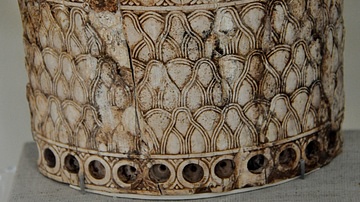
Image
Fragment of an Ivory Cylinder from Fort Shalmaneser
This is a fragment of an ivory cylinder. The original decorative insets are lost. Neo-Assyrian Period, 8th century BCE. From Fort Shalmaneser at Nimrud, Mesopotamia, modern-day Iraq. A loan from the Metropolitan Museum of Art, New York, USA...
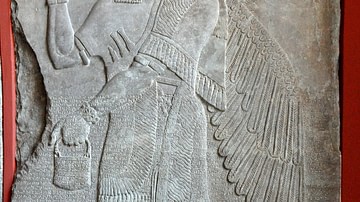
Image
Assyrian Protective Spirit, Nimrud
Alabaster bas-relief, depicting a standing human-headed genie or sage, from the North-West Palace of Ashurnasirpal II at Nimrud, Mesopotamia, modern-day Iraq. Neo-Assyrian Empire, 9th century BCE. Apkallu, a protective spirit, protects the...
![Illegally Excavated Mesopotamian Clay Tablet [7]](https://www.worldhistory.org/img/c/p/360x202/7087.jpg?v=1599474605)
Image
Illegally Excavated Mesopotamian Clay Tablet [7]
This clay tablet was illegally excavated. The precise provenance of the excavation is unknown, but probably from Southern Mesopotamia, modern-day Iraq. It is currently housed in the Sulaymaniyah Museum, Iraqi Kurdistan.
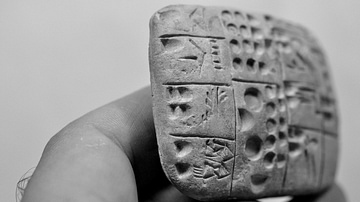
Image
Side View, Illegally Excavated Mesopotamian Clay Tablet
This clay tablet was illegally excavated. The precise provenance of the excavation is unknown, but probably from Southern Mesopotamia, modern-day Iraq. It is currently housed in the Sulaymaniyah Museum, Iraqi Kurdistan.

Image
Detail, Illegally Excavated Mesopotamian Clay Tablet
This clay tablet was illegally excavated. The precise provenance of the excavation is unknown, but probably from Southern Mesopotamia, modern-day Iraq. It is currently housed in the Sulaymaniyah Museum, Iraqi Kurdistan.
![Illegally Excavated Mesopotamian Clay Tablet [13]](https://www.worldhistory.org/img/c/p/360x202/7090.jpg?v=1618722902)
Image
Illegally Excavated Mesopotamian Clay Tablet [13]
This clay tablet was illegally excavated. The precise provenance of the excavation is unknown, but probably from Southern Mesopotamia, modern-day Iraq. It is currently housed in the Sulaymaniyah Museum, Iraqi Kurdistan.
![Illegally Excavated Mesopotamian Clay Tablet [8]](https://www.worldhistory.org/img/c/p/360x202/7091.jpg?v=1618722903)
Image
Illegally Excavated Mesopotamian Clay Tablet [8]
This clay tablet was illegally excavated. The precise provenance of the excavation is unknown, but probably from Southern Mesopotamia, modern-day Iraq. It is currently housed in the Sulaymaniyah Museum, Iraqi Kurdistan.
![Illegally Excavated Mesopotamian Clay Tablet [10]](https://www.worldhistory.org/img/c/p/360x202/7092.jpg?v=1618722903)
Image
Illegally Excavated Mesopotamian Clay Tablet [10]
This clay tablet was illegally excavated. The precise provenance of the excavation is unknown, but probably from Southern Mesopotamia, modern-day Iraq. It is currently housed in the Sulaymaniyah Museum, Iraqi Kurdistan.